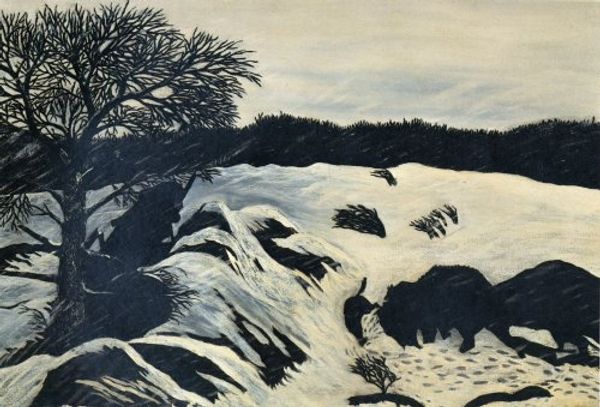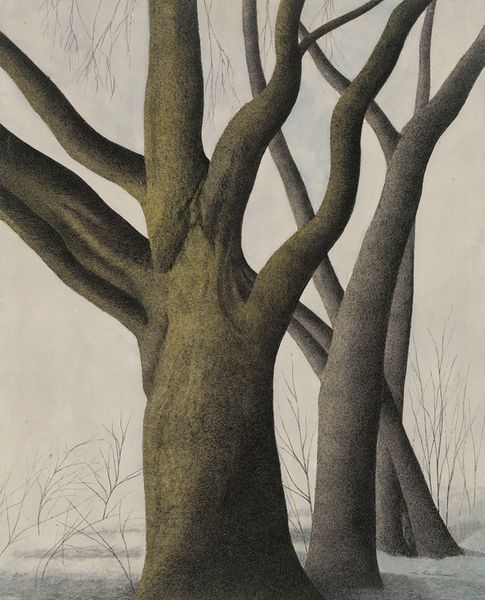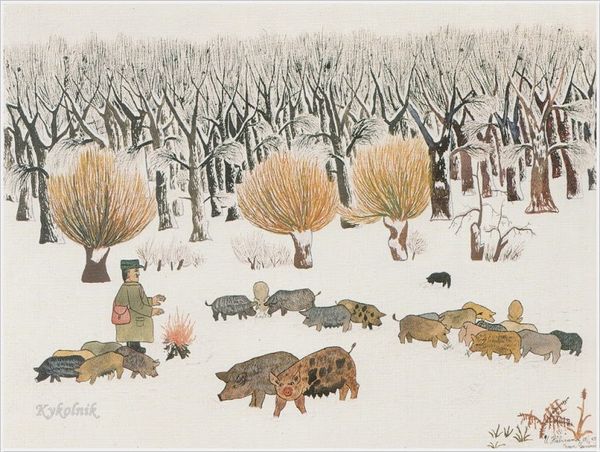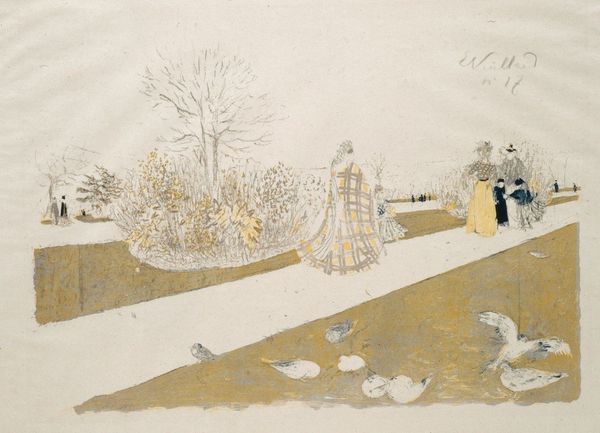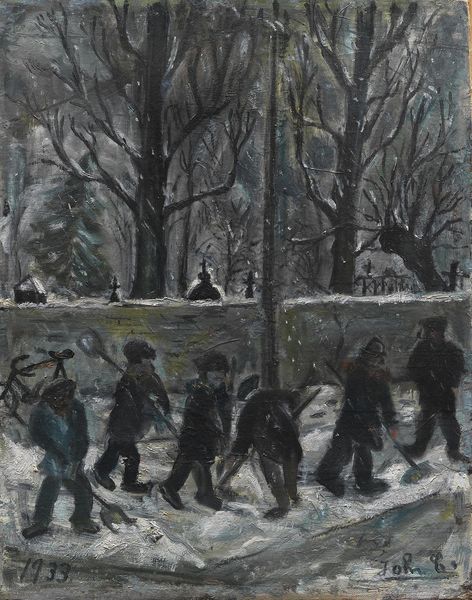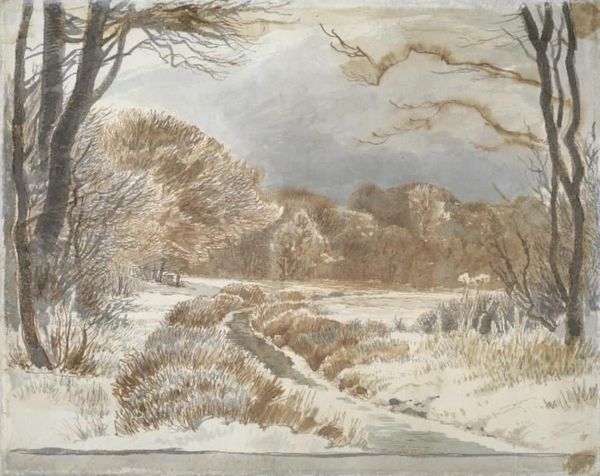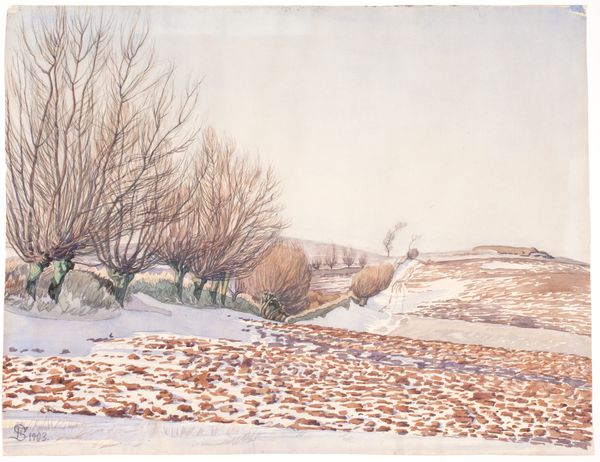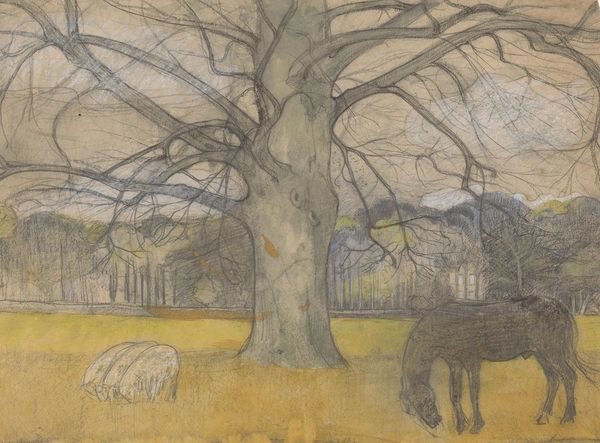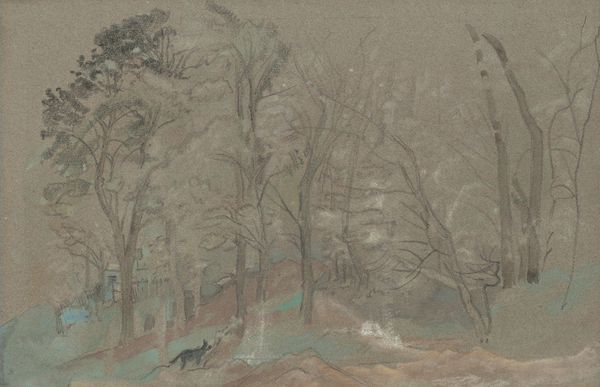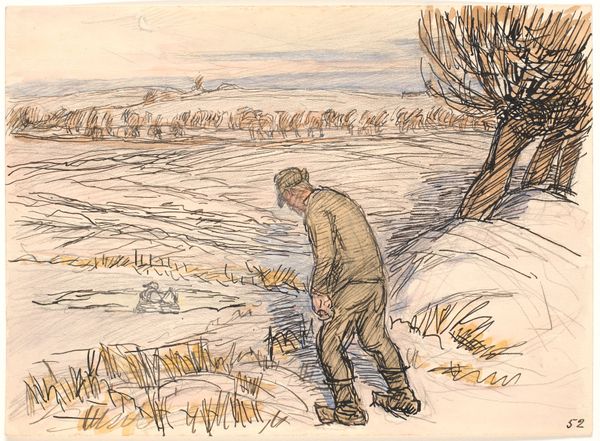
painting, watercolor
#
tree
#
water colours
#
painting
#
asian-art
#
landscape
#
figuration
#
watercolor
#
watercolor
#
realism
Copyright: Public domain China
Xu Beihong painted "Cultivation On The Peaceful Land" with ink and colour on paper. Here, farmers till the soil with the help of an ox, beneath a weeping willow. The ox is a symbol deeply rooted in human history, representing not just agricultural labor but also strength, endurance, and sacrifice. From ancient Egypt, where oxen were sacred and symbols of power, to the Minoan culture's bull-leaping rituals, the animal’s image resonates through time. In the context of this artwork, the ox embodies the collective struggle and perseverance of rural communities, echoing the cyclical nature of life and the rhythms of the earth. The willow tree also has significance. Known for its resilience and flexibility, it can bend without breaking, which can symbolise adaptability and strength in the face of adversity. The image of the weeping willow is associated with mourning, or peace and hope in other contexts, representing nature's cyclical patterns of life, death, and rebirth. These images have been passed down through history, shifting in meaning as collective memory and subconscious processes affect the production and interpretation of the motif. In “Cultivation On The Peaceful Land,” the symbolism reveals the cyclical progression of the farmer's work.
Comments
No comments
Be the first to comment and join the conversation on the ultimate creative platform.
